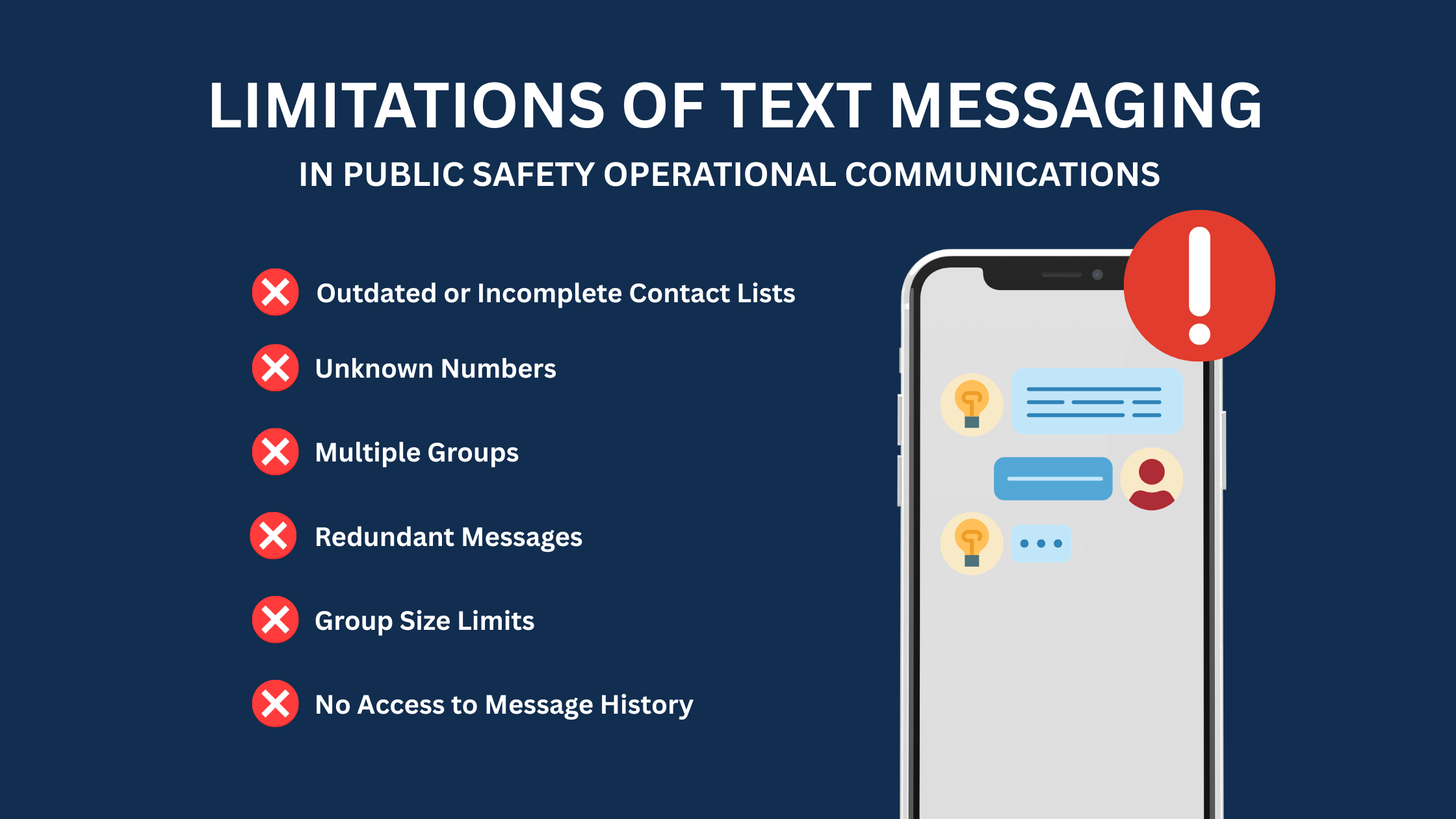Limitations of Text Messaging in Public Safety Operational Communications
In the high-stakes world of public safety, communication is everything. Yet one of the most common tools used during critical operations—text messaging—was never designed for the job.
Whether it's a SWAT callout, protest response, or severe weather incident, texting remains the go-to method for many teams to coordinate in real time. But beneath the surface, it creates a host of operational challenges that put efficiency—and sometimes lives—at risk.
Outdated or Incomplete Contact Lists
Operational success often hinges on getting the right information to the right people. Unfortunately, many teams rely on contact lists that are outdated, incomplete, or siloed across units. This leads to missed messages, delays, and confusion during fast-moving situations.
This issue is even more problematic for agencies that assign mobile devices by position rather than individual. When numbers are reassigned, it's easy to unknowingly invite the wrong person into a critical group text—potentially exposing sensitive information, compromising operational security, or creating avoidable delays in response coordination.
Group Messages with Unknown Numbers
In public safety, speed matters—but so does clarity. Because texting relies on each individual having others’ numbers saved correctly in their personal or department-issued phones, group texts often include multiple unknown numbers.
This leaves recipients with two risky options: waste valuable time trying to identify each participant, or blindly share information and risk it being seen by unauthorized persons. Either choice slows coordination, undermines trust, and increases the potential for miscommunication during critical operations.
Redundant Threads and Fragmented Updates
Without a centralized communication hub, team members create multiple overlapping text groups—each with partial information and different participants. This fragmentation results in duplicated efforts, inconsistent updates, miscommunication and operational blind spots.
Text Group Size Limits
Standard texting apps cap group size, which limits the ability to scale communication during large-scale incidents. This forces teams to create parallel threads, further fragmenting situational awareness.
No Access to Message History
When someone is added to an existing group text, they can't see any prior messages—leaving them without context in time-sensitive, high-risk situations. This often leads to repeated questions, missed instructions, and delays in response—all of which can compromise the effectiveness of the operation.
Texting Isn't Built for Mission-Critical Collaboration
Texting is convenient, but it wasn't built for public safety. It lacks auditability, administrative controls, real-time visibility, and the structure required for coordinated, secure, and accountable operations.
As agencies look to modernize their communications strategies, it's time to rethink how we use texting—and recognize that mission-critical operations demand more than a consumer-grade solution.


